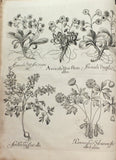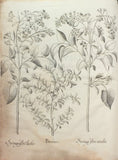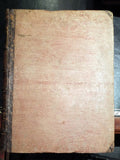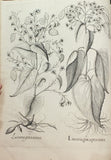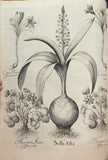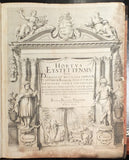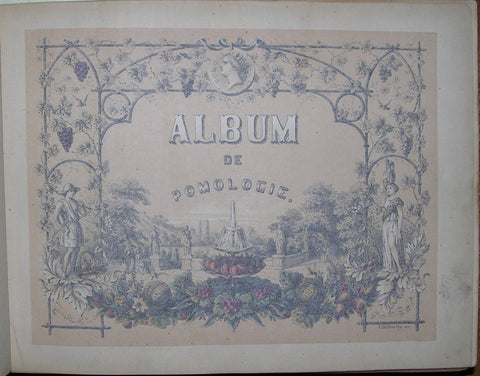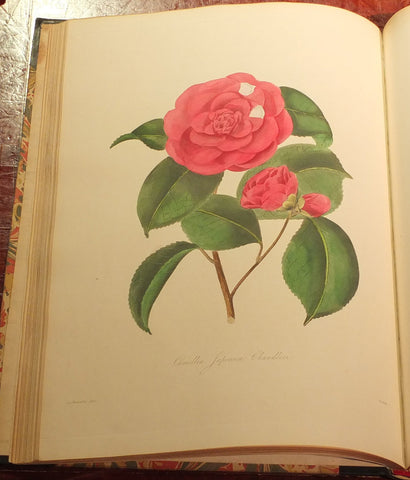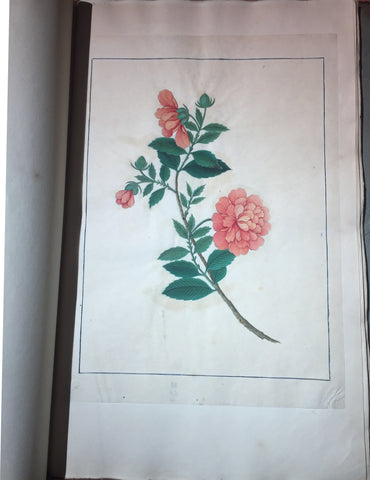Basilius Besler (1561-1629), Hortus Eystettensis...
Basilius Besler (1561-1629)
Hortus Eystettensis, Sive Diligens et Accurata Omnium Plantarum, Florum, Stirpium, Ex Variis Orbis Terrae Partibus, Singulari Studio Collectarum, Quae in Celeberrimis Viridariis Arcem Episcopalem Ibidem Cingentibus, Hoc Tempore Conspiciuntur...
Nuremberg: 1613
Broadsheets, bound (21 x 17 inches). Engraved title-page by Wolfgang Kilian, engraved portrait of Besler, 4 engraved sectional titles of the seasons, 364 engraved plates of flowers and plants (only, of 366) on 365 leaves (only, of 367; the first figure in Summer 3 comprises two plates joined to form one folding plate "Martagon Imperiale") (Lacking privilege leaves, Spring B 4 "Coronae Imperialis" and Summer 2D 14 "Caryophyllus Multiplex"; the early leaves of volume one with some discoloration, dampstaining, some tears repaired on the verso of one or two images, some plates trimmed; first sectional title to volume two torn and strengthened on the verso). 18th-century mottled half-calf(extremities scuffed).
Provenance: Bookplates of a 19th- century ecclesiastical library on each paste-down.
"A monument to his passion for beautiful flowers of all sorts, commonplace wild flowers as well as the exotics" (Barker).
First edition, one of about 300 copies printed, issue with text on the verso of the plates. One of the largest and most magnificent of the great flower books, depicting more than 1000 flowers from nearly 700 species. Commemorating the famous gardens of the Prince-Bishop of Eichstatt, Johann Conrad von Gemmingen (c. 1561-1612), and as such one of the earliest pictorial records of flowers from a single garden: "we do not know how much the bishop spent on the exotic new species acquired from the merchants of Amsterdam, Antwerp and Brussels. but "Hortus Eystettensis" remains, no doubt as the bishop planned, a monument to his passion for beautiful flowers of all sorts, commonplace wild flowers as well as the exotics obtained and cultivated with such care and difficulty.. Von Gemmingen deserves the credit for acquiring and growing flowers simply as beautiful things, for creating a suitable setting for them and finally, FOR CAUSING TO BE PRINTED THE FIRST BOOK DEVOTED TO RECORDING THEIR BEAUTY" (Barker).
A copy with a significant ownership history recently sold at Christie’s Sale 12139, Valuable Books and Manuscripts, on July 13th, 2016 for GBP 1,930,500, though it was the issue without the descriptive text.
Besler was a Nuremberg apothecary and collector of natural curiosities. Important influences were the botanical works of Joachim Camerarius the Younger, Charles de l"Ecluse, Caspar Bauhin, Castore Durante, Caspar Schwenckfeld, Jakob Theodor (Tabernaemontanus), and Matthias de l'Obel. The "Hortus" was complete in Autumn 1613 and at least 300 copies were issued. Most of the original "plate" drawings are still extant (having been preserved by Christoph Jakob Trew), and are now in the University Library, Erlangen. They are possibly by Wolfgang Kilian of Augsburg, the most important of the ten engravers involved, and are after drawings from nature by various artists. Other engravers included Georg Gartner, Johann Leypolt, Levin van Hulsen and his son Friedrich, Peter Isselburg, Servatius Raeven and Heinrich Ulrich. The copper plates survived until 1817, when they were melted down by the Royal Mint in Munich. Cleveland "Herbal" 159; Hunt 430 (1713 edition); Nissen BBI 158; Pritzel 745; Stafleu TL2 497; see also Nicolas Barker, "Hortus Eystettensis: The Bishop's Garden and Besler's Magnificent Book" (London, 1995).
We Also Recommend


